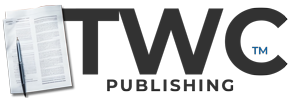Volkswagen: Engineering a Disaster
No Fee
| Case ID: | E-VW-20230719-1-V1 |
|---|---|
| License: | CC BY-NC-SA 4.0 |
| Pages | 3 pgs |
| Case Study Analysis | Not Included |
| Teaching Notes | Not Included |
| Ai Level | Content co-authored with the OpenAI API |
| Category(s) | Ethics (9/10) |
The Volkswagen emissions scandal, often referred to as “Dieselgate,” is a landmark case in corporate ethics and strategy. In 2015, the automotive giant was discovered to have installed “defeat devices” in their vehicles to manipulate emissions tests, resulting in levels of pollution up to 40 times the legal limit. This deceptive practice not only damaged Volkswagen’s reputation but also posed significant challenges from a human resource management and marketing perspective. The scandal is a profound illustration of the repercussions of ethical breaches and the importance of fostering a culture that encourages ethical conduct and open communication. It provides a rich multidisciplinary learning ground, spanning areas of ethics, strategy, HR, and crisis management.
Case Alignment with Categories (out of 10):
- Ethics (9/10): The Volkswagen scandal is primarily an ethical case, involving deliberate manipulation and deception. This case is suitable for exploring business ethics, corporate responsibility, and the consequences of ethical lapses.
- Strategy (8/10): The case speaks to the dangers of aggressive growth strategies without due regard for ethical considerations. It allows for a discussion on strategic planning and the implications of strategic decisions on the reputation and performance of a company.
- Human Resource Management (8/10): The case showcases the need for a robust organizational culture, ethics training, and whistleblower programs. It provides an opportunity to explore the role of HR in enforcing ethical practices and shaping corporate culture.
- Marketing (7/10): Post-scandal, Volkswagen faced a significant challenge in regaining customer trust and restoring its brand image. This situation presents a valuable opportunity to discuss crisis management and recovery strategies in marketing.
- General Management (7/10): This case touches on elements of leadership and management, such as decision-making, dealing with crises, and managing organizational reputation. It could be used to explore these areas in a general management course.
Weaknesses of this Case Structure
- Lack of Detail: The case lacks comprehensive detail about the scandal's genesis and unfolding, leaving readers with gaps in their understanding of the event. A well-rounded case study needs to offer a complete picture of the incident for effective analysis.
- Inadequate Context: The case fails to provide sufficient context about Volkswagen’s business environment, competitive landscape, or the regulatory framework at the time. This lack of context limits the scope of strategic and policy-based discussions.
- Absence of Quantitative Data: The case lacks specific data points or quantitative evidence to help gauge the magnitude of the crisis, or the subsequent impact on Volkswagen's business. Data aids in analysis and decision-making, contributing to the usefulness of a case study.
- Limited Storytelling: The case is presented as a series of facts, with little storytelling or narrative to engage readers. A well-structured narrative can help students better understand the complexities of the situation and promotes interest and engagement.
Strengths of this Case
- Rich Ethical Discussion: The case presents an excellent opportunity for ethical analysis, encouraging students to explore the consequences of ethical breaches and discuss ways to prevent such misconduct.
- Real-life Consequences: The fallout from the scandal had significant real-world implications, which makes the case study valuable for students to understand the gravity of unethical business practices.
- Multidisciplinary Approach: The case touches upon multiple disciplines including ethics, strategy, HR, marketing, and general management. This broad coverage provides students with a comprehensive view of the incident from various business perspectives.
- Crisis Management: The case provides an opportunity to study and discuss crisis management and recovery strategies, especially in the context of restoring brand image and trust.
- Focus on Corporate Culture: The case underscores the importance of fostering a healthy corporate culture that encourages ethical behavior, making it a useful tool for discussions around HR management and organizational behavior.





